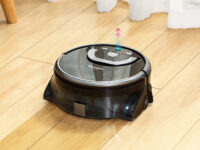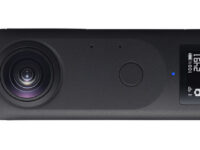Reach more home owners! Advertise with Smart Homes Now!
Reach millions of home owners now! Advertise with us!
Email Us
Since most of us spent our time at home during the pandemic, we had to change how we lived. And it appears that more home owners bought smart devices to help them adapt to the new normal.
A new study released today by Xiaomi, a global leader in smart devices, found that since March 2020, 70% of consumers have reported making changes in their living environment due to spending more time at home during the pandemic. More than half (51%) have reported purchasing at least one smart device during that period.
Stay-at-home orders changed the very notion of how people interact and live in their homes. It drove people to reconfigure their physical space to meet new functional requirements, including working and learning at home, creating at-home gyms, or finding new ways to relax and enjoy themselves.
The survey found that 3 out of 5 respondents said that since their leisure and work environments have become one, it has become harder to carve out personal space to relax and find joy at home. Of those, 63% purchased smart home devices, 82% adapted a room for working from home during COVID, and 79% reconfigured at least one room.
In the report, Xiaomi said that smart living has always been about reimagining and optimizing physical space to solve problems and adapt to new realities through the use of technology, and this adoption accelerated in 2020
Key survey findings include:
People had to adapt existing spaces to serve new purposes, particularly younger generations.
Makeshift spacing arrangements were widespread across all age groups, with nearly two-thirds (66%) of all respondents saying they had to use makeshift spacing arrangements in response to staying home more during the pandemic. This particular trend is more pronounced among Gen Z and Millennials — 91% of Gen Z consumers and 80% of Millennials indicated this was something they had to do.
Smart home device purchases were a solution.
On average, consumers bought two new smart devices since March in response to being home more during the pandemic, with Gen Z consumers purchasing an average of three. Intelligent machines can streamline space and provide solutions for problems generated by more time at home, such as the need to carve out specific work or study space. Regardless of devices purchased, there is an overwhelming consensus among consumers (82%) that there are significant advantages to a home with smart devices.
For many, these makeshift solutions may end up being permanent. 60% of consumers say they plan to continue using their home for activities typically performed elsewhere, even after a COVID-19 vaccine is widely available. If stay-at-home orders go into effect again in 2021, nearly 2 in 5 (39%) of consumers have reported that they want to upgrade their devices, and 41% will adapt a room. Moving into 2021, the adoption and integration of smart home technology will be a prevailing trend in home improvement as consumers look to smart devices as part of their long-term solutions.
Increased time at home during COVID-19 drove significant changes and desires for how people lived in, interacted with, and designed their homes. Smart home ecosystems provided a solution for the unprecedented changes of 2020. Intelligent devices can inspire consumers to see new uses for their space: such as creating at-home movie theaters with smart projectors, access to a plethora of streamed content, intelligent speakers, and more; or, creating a specified workspace with increased connectivity, automated lighting, and upgrading existing tech to smart solutions. Smart ecosystems also help consumers automate daily tasks, improving productivity, efficiency, and the home overall, such as automated cleaning schedules with air purifiers, smart appliances, or robot vacuums. Smart home devices can have a lasting impact on how we interact with the space around us beyond 2020 and 2021, providing upgrades and impetus for long-term benefits.
As of September 30, 2020, the number of users with five or more devices connected to Xiaomi’s AIoT platform reached 5.6 million. Much of Xiaomi’s growth is coming from overseas markets, including expansion into Western markets. The newest product to be readily available for U.S. consumers is Mi Air Purifier 3H, which will go on sale starting January 14, 2021.
For more information on Xiaomi and their smart home ecosystem, visit mi.com.






